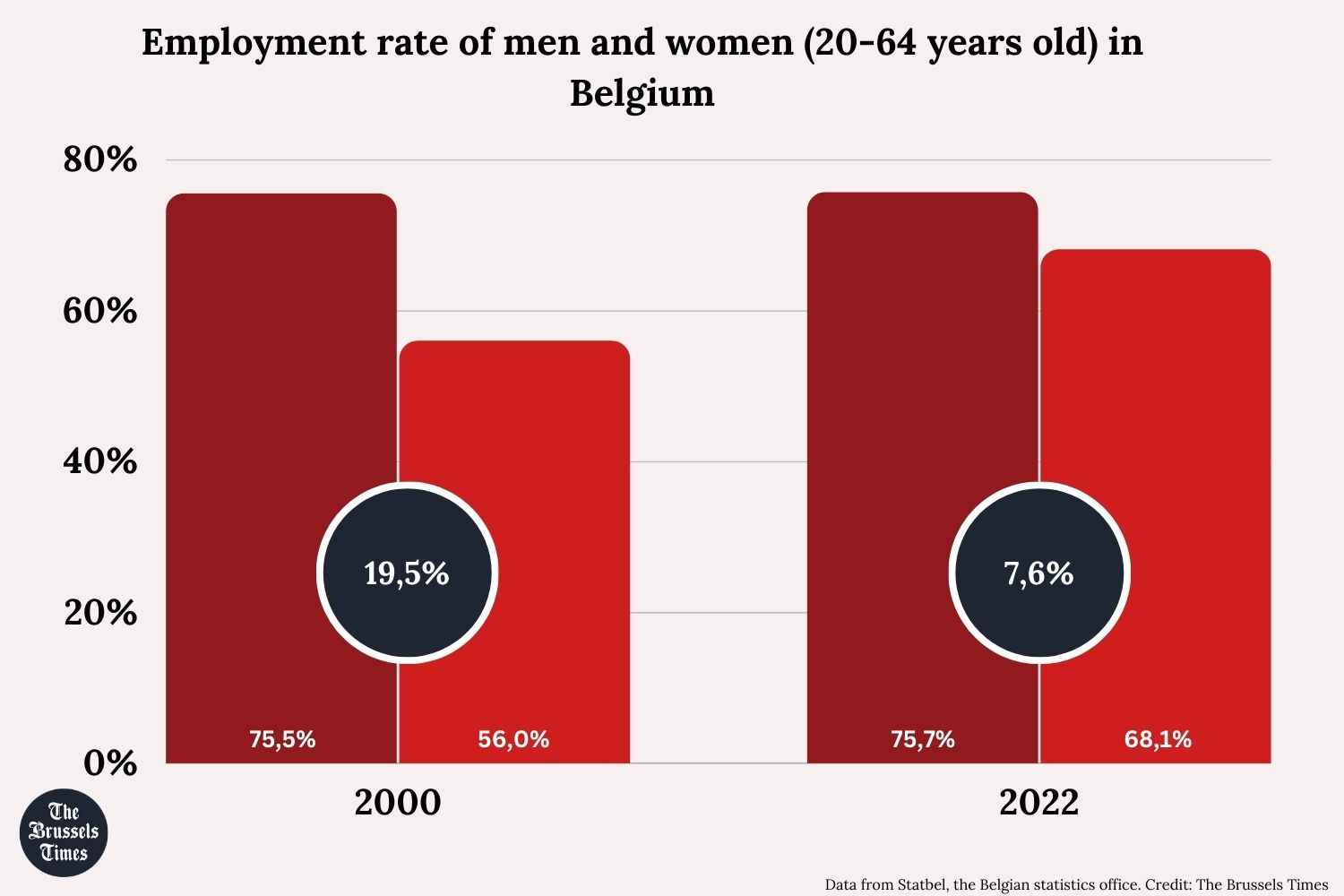Belgium's employment rate has never been higher than in 2022, yet Brussels continues to lag behind the other regions despite 22 years of overall improvement.
Published by the statistical office Statbel, the overview of labour market indicators of the last two decades has both good and bad news for Belgium's employment rates. Since 2000, the employment rate of people aged 20-64 in Belgium has increased by almost 10%, while the unemployment rate of people aged 15-64 dropped by one-fifth.
"Our country has never had such a high rate. All regions have registered an increase over these 22 years," Statbel noted on Wednesday.
While the Brussels-Capital Region saw the highest increase of all regions (+5.5 points), it remains the region with the lowest employment rate at 65.2%. Together with Wallonia, the level of employment is below the Belgian average.
At the provincial level, East Flanders, at 80%, has the highest rate in 2022, while the Walloon province of Hainaut has the lowest employment rate (61.4%), as was the case in 2000 (58.7%).
The unemployment rate for 15-64-year-olds is lower than in 2000: last year, the rate was 5.6% compared to 7% 22 years ago. This rate declined in every region, but Brussels experienced the largest drop (-2.5 percentage points compared to -1.1 in Flanders and -1.9 percentage points in Wallonia).
However, Brussels still has the highest unemployment rate at 11.5%, but it has dropped since 2000, when it was 14%.
More middle-aged people employed
Statbel's figures also showed that, since 2000, the percentage of 55- to 64-year-olds in Belgium who are employed more than doubled from 26.3% to 56.6% in 2022.
"Every region experienced an increase between 2000 and 2022," Statbel explained. The employment rate in that age category rose the most in Flanders, where almost 60% of middle-aged people were at work.
In Wallonia, this figure was almost 10% lower (51.8%), while in Brussels, 54% of people in this age group were employed last year.
Finally, in the last 22 years, the gender employment gap of people aged 20 to 64 has significantly decreased.
In 2000, 75.5% of men were employed, while just 56% of women had a job. Last year, the rate was similar for men, but for women, the proportion had increased to 68.1%. "That gives a gap of 7.6 percentage points. In 2000, it was 19.5 percentage points."
"The gender gap is decreasing in all regions but to varying degrees. Brussels experienced a 3.1 percentage point decrease in the gap while it fell by 12.8 percentage points in Flanders and by 12.9 percentage points in Wallonia," Statbel noted, highlighting that Brussels is once again falling behind in employment development.
This change is remarkable as, in 2000, Brussels had the smallest difference in employment rate (13.2 percentage points) while Antwerp had the highest (23.5 percentage points.) Two decades later, Brussels has the largest employment rate gap at 10.1 percentage points.


